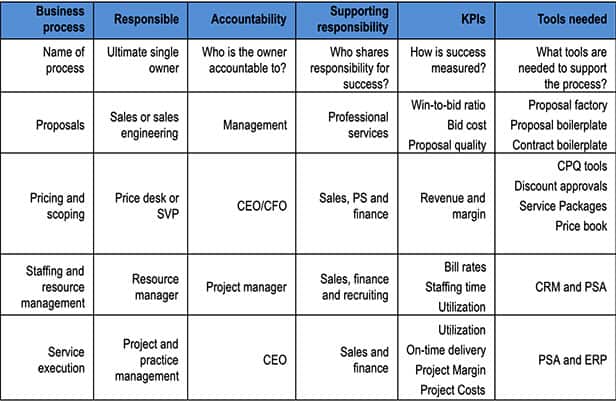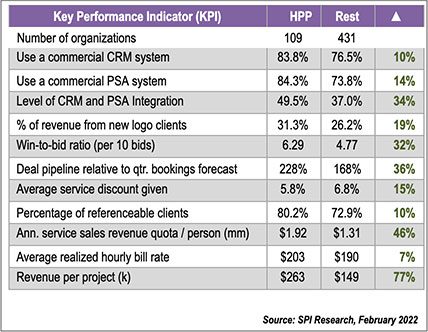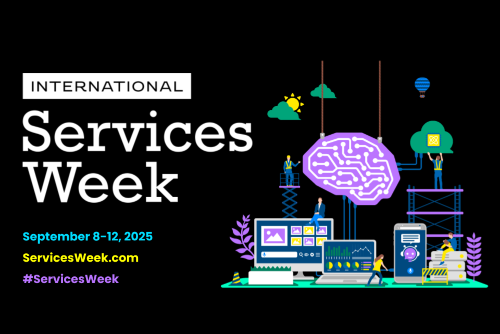Perfecting sales to professional services alignment

What do top-performing organizations do differently?
In today’s highly competitive environment, firms must build differentiation and effectively orchestrate the sales cycle. Unfortunately, schisms between sales and service delivery frequently surface during the sales process and beyond. This can result in many issues including deal closure delays, lost deals, revenue leakage, and reduced customer satisfaction levels.
The winning formula for sales and service delivery collaboration is based on a combination of aligned business processes and measurements reinforced by a supporting technology platform which includes customer relationship management (CRM); professional services automation (PSA); services configuration, pricing and quoting (CPQ) and project-based ERP. This blog examines the root causes underlying dysfunctional sales and service delivery relationships and identifies common business process breakdowns, as well as the path to alignment.
Are your resource management practices hurting or helping?
Take the resourcing health check
The struggle is real
Working with more than 6,000 professional services organizations over the years, we have discovered that few professional services organizations are satisfied with the relationship between sales and service delivery. According to the 2022 PS Maturity™ Benchmark, sales effectiveness received a poor score of 3.64 out of 5 (72.8%).
A lack of alignment and trust between sales and service delivery leads to lost opportunities, miss-set client expectations, under-scoped projects, and poor resource utilization. Top-performing professional services organizations have found a way to bridge the sales and service divide to reap rewards in terms of larger pipelines, higher win-to-bid ratios, higher levels of consultant utilization, and more satisfied clients.
The complexities of identifying professional services opportunities and developing them into successful client engagements demand a more structured approach to business development and seamless information flow between sales and service delivery. This ensures opportunities are properly prioritized, scoped, quoted, staffed, and billed.
While the consulting market is currently experiencing healthy growth, both up and down markets accentuate breakdowns between sales and service. When fewer deals are available and sales cycles are longer, heightened pressure and a sense of urgency to close deals may lead to big discounts and high-risk contracts. On the other hand, when opportunities are plentiful, resource imbalances and heightened risk aversion may also strain sales and service liaisons.
Sources of sales and services dysfunction
Gulfs between sales and service typically emerge in the choppy waters between functions where the overly optimistic sales tide meets the risk-averse services shore. Who, and which function is in charge of piloting client opportunities through these brackish seas?
Typical sales and service breakdowns occur in the following areas:
- Proposals. PSOs (Professional Services Organizations) often demonstrate a lack of clarity around which opportunities to pursue, how to create a winning proposal or who is ultimately in charge. Ambiguity can lead to procrastination; excessive bid costs; acceptance of egregious terms; and not enough time, tools or resources to bring all the pieces together into a compelling value-based proposal. Without reusable proposal components which incorporate best practices and previous experiences valuable insights into costs and pricing are lost.
- Pricing and scoping. In many cases, it’s unclear who has authority for discounting and contract terms. Poorly defined or unknown requirements, weak or non-existent estimating tools, inaccurate understanding of the true cost to serve, vague discounting limits, and inadequate or no pricing or contractual reviews all contribute to mediocre financial results and unacceptable levels of risk. Poorly qualified deals may clog the sales pipeline, divert bid resources from more attractive opportunities, compromise forecasting accuracy and incur excessive pre-sales costs.
- Forecasting and staffing. Many PSOs are deficient in what it takes to move a suspect to a high-probability deal or how the sales forecast is translated into the resource plan. A lack of alignment and trust are exacerbated by incongruent sales booking and services margin goals. Unreliable sales forecasts lead to disconnected sales and resource planning processes and insufficient functional interlock regarding opportunities and required staffing. A lack of integration between sales, staffing and recruiting, results in not enough or too much service delivery capacity. Nothing is worse for customer satisfaction than winning a piece of work only to discover required resources are non-existent or unavailable.
- Services execution. Omissions and errors in quoting and estimating lead to miss set customer expectations and delivery mistakes. Inconsistent communication between service delivery and sales regarding project status often occurs. No project dashboards, improper planning, and poor execution of scope changes and change orders lead to project overruns, nasty surprises and unhappy clients.
Business process requirements for sales and services alignment
A lack of agreement around key business processes that cross organizational or functional boundaries is at the core of dysfunctional sales and service delivery relationships. Issues are typically the result of contradictory objectives, conflicting data, opposing views of business processes, unknown or misused levels of authority, and ambiguity around decision-making and measurements.
The foundation for all high-performing organizations comes from clear business process understanding and ownership tied to congruent goals and measurements and supported by integrated business applications built on the same technology platform. Table 1 illustrates how a simple RASCI method of assigning ownership and measurement of cross-functional business processes provides clarity and enhances performance.
Table 1: Defining Business Process Roles and Measurements
The impact of sales and services alignment
Effective sales and service delivery teamwork is at the heart of performance in the services industry. The integration of sales and service delivery business processes and systems is paramount to success. High-Performance PSOs comprise the top 20% of benchmark participants and Table 2 compares their performance to the remaining 80%.
Table 2: High-Performance PSO Comparison – Client Relationships Pillars
CRM and PSA integration drive performance
As demonstrated above, integrated customer relationship management and professional services automation applications are key to breaking down the barriers between sales and services by providing accurate client and project information throughout the client life cycle. Running a knowledge and skill-intensive business like professional services with disconnected applications, spreadsheets, text and email is no longer a competitive option. Efficient execution across core business processes demands visibility, transparency and control.
Ideally, information flow mirrors and illuminates core business processes, beginning with prospecting and extending through the client life cycle. Time, cost, engagement progress and quality are critical elements that must be tracked throughout. Integrated applications provide visibility, alerts and workflows to ensure that the proper steps are followed, approvals are secured and variances are flagged.
Executives and other involved personnel should be able to track information from the initial bid through project completion and invoicing. With this information, both management and consultants can monitor deals to ensure high levels of client satisfaction with acceptable revenue and profit margins.
The integration of PSA and CRM helps the sales organization better understand the entire client relationship and also discover opportunities to sell additional products and services. Sales and services cooperate to decide whether work should be bid, and at what price to win the opportunity and meet margin requirements.
Accurate information enables the service delivery team to proactively plan and staff projects with the right resources while supporting the sales team in closing opportunities. The executive team is armed with real-time visibility into revenue and costs to support effective decision-making.
The 2022 PS Maturity Model Benchmark report demonstrates the power of CRM and PSA integration as an important foundation for improving sales and service delivery alignment. The benefits of sales and service delivery collaboration speak volumes.
Recent Articles
Maximize your Salesforce investment with Certinia








